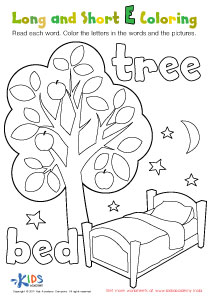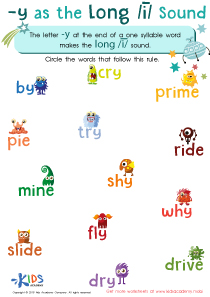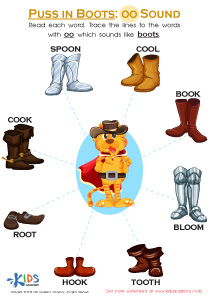Normal Vowel Digraphs Worksheets for Ages 3-8
3 filtered results
-
From - To
Unlock the joy of learning with our Normal Vowel Digraphs Worksheets designed for children aged 3-8. These engaging worksheets are perfect for early learners as they explore and master vowel combinations. With a variety of fun and interactive activities, your child will gain confidence in reading and spelling through targeted vowel digraph practice. Each worksheet is curated to help little learners identify, pronounce, and use vowel digraphs in everyday words. Enhance your child's phonics skills at their own pace with colorful and accessible exercises. Ideal for home or classroom, make phonics a captivating adventure today!
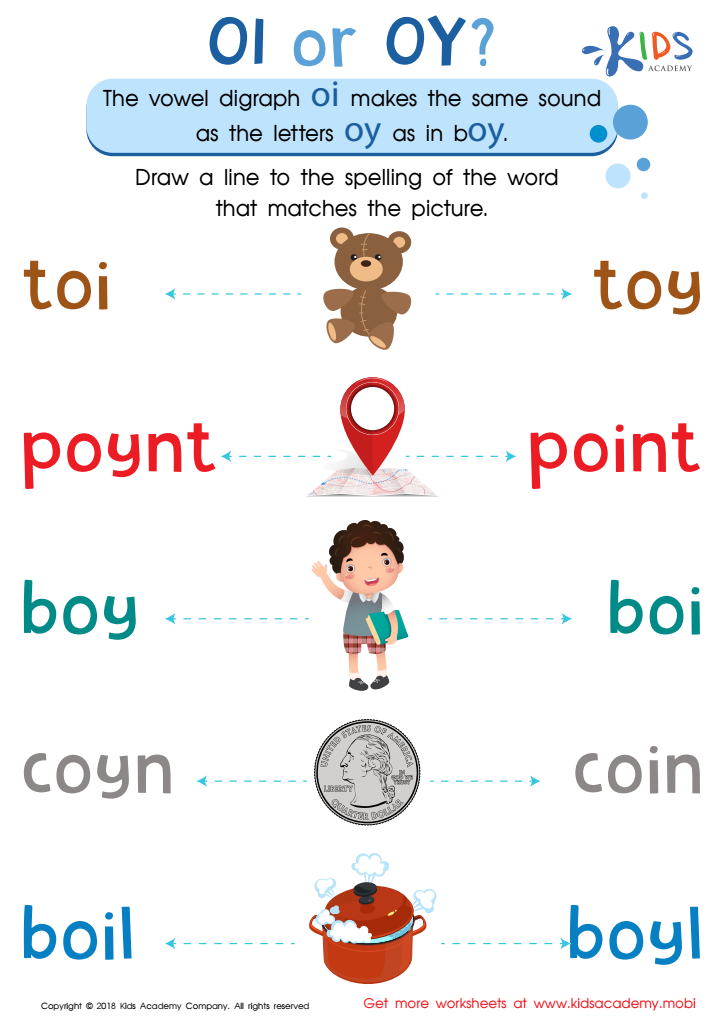

Reading: OI and OY Worksheet
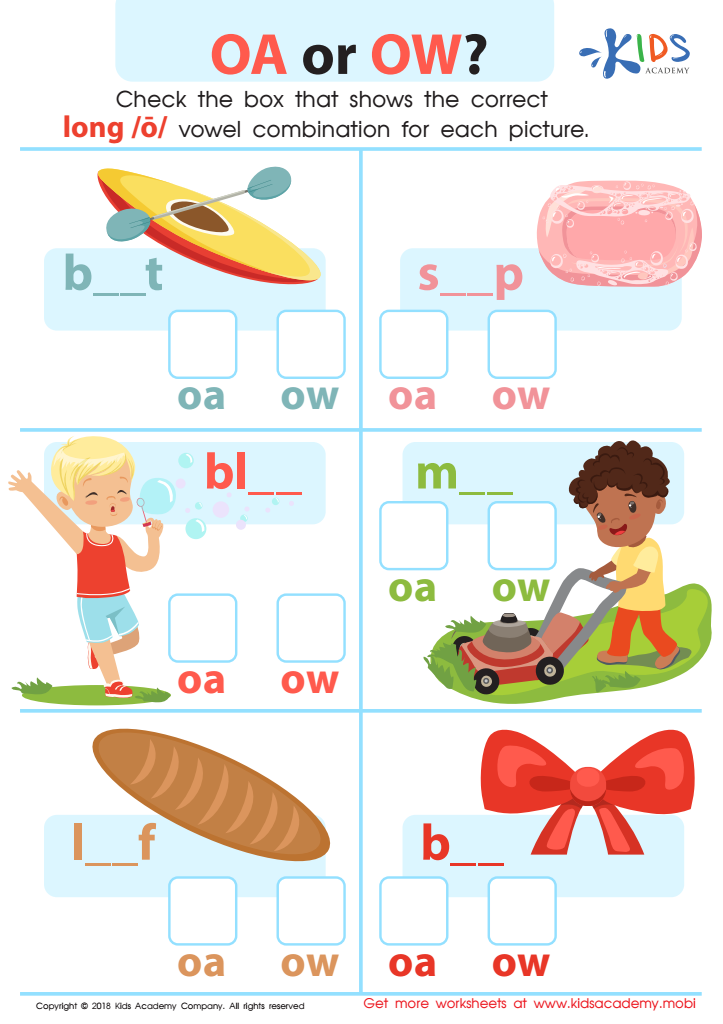

Reading: OA or OW Worksheet
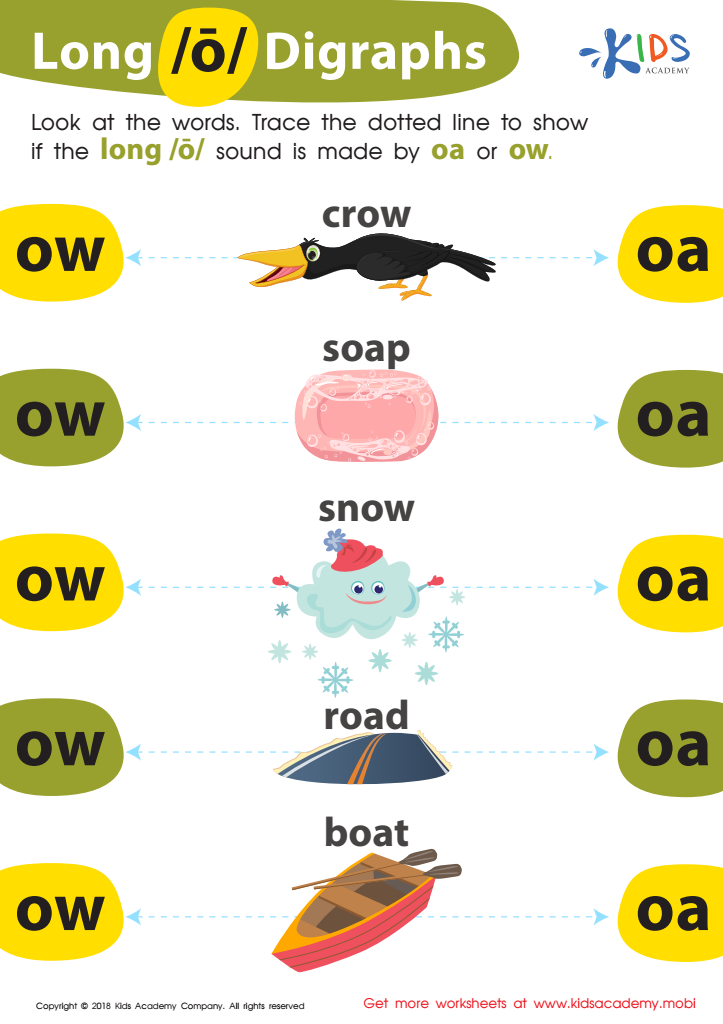

Reading: Long O Digraphs Worksheet
Normal vowel digraphs, such as ‘ai’ in “rain” or ‘ea’ in “bread,” are essential elements in early literacy development for children aged 3-8. Understanding these digraphs significantly impacts a child's reading and writing skills. When parents and teachers focus on vowel digraphs, they help children recognize common letter patterns and sounds, an important step in decoding new words. This ability boosts confidence, making reading more enjoyable and less frustrating.
Early mastery of vowel digraphs supports children’s phonemic awareness, which is foundational to spelling and writing. Recognizing these patterns aids in spelling words correctly, preventing common errors and helping children to see the connections between different words. In addition, this knowledge supports vocabulary growth, comprehension, and fluency, as children are more likely to understand and smoothly read through sentences containing familiar letter combinations.
Furthermore, learning vowel digraphs at an early age sets the stage for more complex phonics skills and literacy tasks that they will encounter as they advance in education. By prioritizing these elements, parents and teachers ensure a robust early literacy experience, laying a strong groundwork for lifelong learning and academic success. Therefore, attention to normal vowel digraphs during the ages of 3-8 is crucial for budding readers and writers.
 Assign to My Students
Assign to My Students




